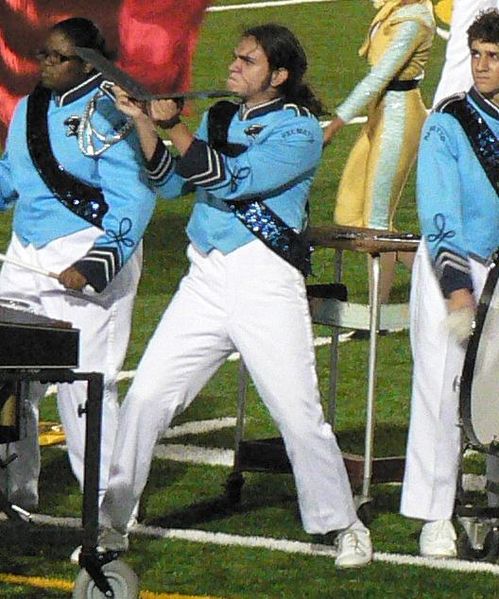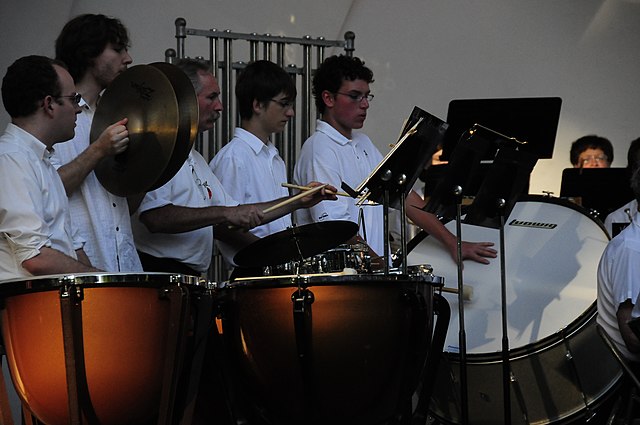Clapper (musical instrument)
A clapper is a basic form of percussion instrument. It consists of two long solid pieces that are struck together producing sound. They exist in many forms in many different cultures around the world. Clappers can take a number of forms and be made of a wide variety of material. Wood is most common, but metal and ivory have also been used. The plastic thundersticks that have recently come to be popular at sporting events can be considered a form of inflated plastic clapper.
A slap stick manufactured by Ludwig
A whip being used in a front ensemble
David playing the harp, accompanied by a plucked fiddle and clappers. Germany or France, circa 795 A.D. Clappers from the Carolingian Empire appear to have been disks or possibly chimes attached to sticks.
A percussion instrument is a musical instrument that is sounded by being struck or scraped by a beater including attached or enclosed beaters or rattles struck, scraped or rubbed by hand or struck against another similar instrument. Excluding zoomusicological instruments and the human voice, the percussion family is believed to include the oldest musical instruments. In spite of being a very common term to designate instruments, and to relate them to their players, the percussionists, percussion is not a systematic classificatory category of instruments, as described by the scientific field of organology. It is shown below that percussion instruments may belong to the organological classes of idiophone, membranophone, aerophone and chordophone.
Orchestral percussion section with timpani, unpitched auxiliary percussion and pitched tubular bells
Djembé and balafon played by Susu people of Guinea
Concussion idiophones (claves), and struck drums (conga drum)
Modern Japanese taiko percussion ensemble







